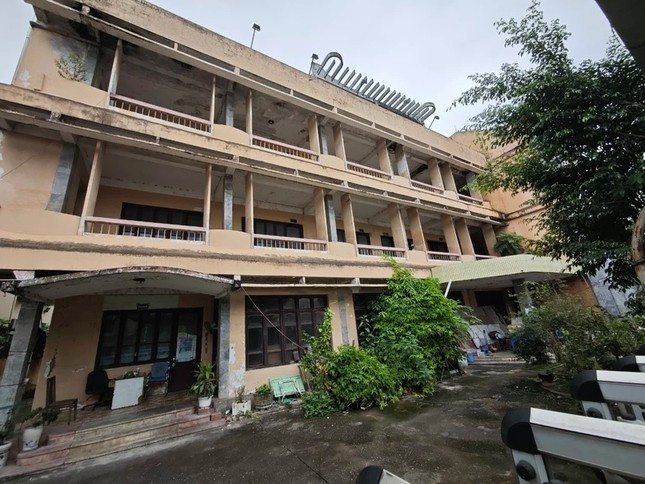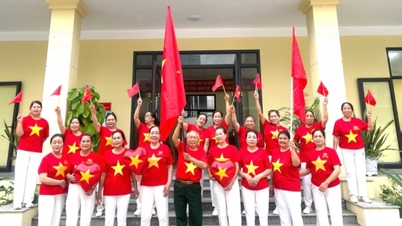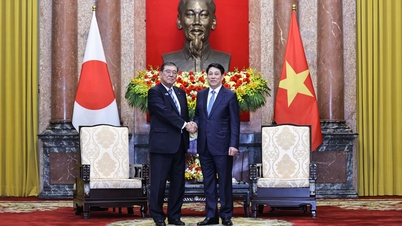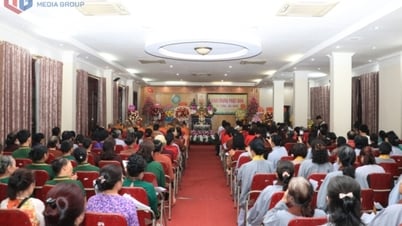Provincial level develops plan to handle district and commune headquarters
It is expected that the National Assembly Standing Committee will issue a Resolution on the arrangement of administrative units. The draft, prepared by the Ministry of Home Affairs and being reviewed by the Ministry of Justice, specifically addresses the issue of arrangement and handling of headquarters and public assets after the arrangement.

In particular, the Provincial People's Committee is assigned to make a list and plan to handle the headquarters and public assets of agencies, organizations and units at the district and commune levels under its management, along with a project to rearrange administrative units at the commune level.
In addition, before the arrangement, the provincial People's Committee shall make a list and agree on a plan to handle the headquarters and public assets of agencies, organizations and units at the provincial level under its management, along with a plan to arrange provincial administrative units.
"The arrangement and use of headquarters and public assets after the administrative unit arrangement shall comply with the Government's regulations on the rearrangement and handling of public assets and instructions from competent authorities," the draft Resolution on the administrative unit arrangement clearly states.
In this resolution, the drafting agency also proposed that ministries and central agencies with affiliated units in the area to be reorganized will make a list and plan for rearranging and handling headquarters and public assets under their management. In case there is no need to use them, they will be transferred to the provincial People's Committee to arrange, manage and use them according to local needs.
In this draft resolution, the Ministry of Home Affairs proposes that within 5 years from the effective date of the resolution, localities will complete the rearrangement and handling of headquarters and public assets of agencies and units in the administrative units after the rearrangement.
Talking to Tien Phong , experts and National Assembly delegates all paid special attention to the effective use and avoidance of waste of public headquarters and public assets after merging administrative units at all levels.
Dr. Nguyen Viet Chuc - former Vice Chairman of the National Assembly's Committee on Culture, Education, Youth, Adolescents and Children (now the Committee on Culture and Society) emphasized the view that it is necessary to maximize the savings of material resources such as public assets and public headquarters after the merger.
Therefore, at the provincial level after the merger, priority should be given to choosing existing administrative centers. On the contrary, it is necessary to limit the construction of new headquarters, because it will be very wasteful and costly. "Investing in building new centers after the merger is a last resort," said Mr. Chuc.
Sharing the same view, National Assembly delegate Nguyen Thi Viet Nga (Hai Duong delegation) also noted that it is necessary to make the most of existing facilities and headquarters to avoid wasting resources. According to her, when determining a new administrative center, it is important to consider the vision, how to invest, and where to place the center to have the best development for that province and region.

Priority in health and education
Similarly, for district-level headquarters after dissolution and commune-level headquarters after merger, opinions all noted that they must be used effectively, serving the most practical needs of the people, especially in the fields of health and education, and not be left abandoned, causing waste of resources.
According to National Assembly delegate Khuong Thi Mai (Nam Dinh delegation), with the surplus headquarters at district and commune levels, priority should be given to serving the healthcare and education sectors. These are areas that are in great need and need to be prioritized to best serve the people. In particular, when implementing the two-level government model, the primary healthcare sector needs to be given more importance and priority.
In addition, there are also suggestions that surplus headquarters can be auctioned to attract investment resources. However, experts recommend that this issue should be carried out carefully, publicly, transparently, and the value of the assets must be properly assessed to avoid waste and loss.
Regarding implementation resources, the draft on administrative unit arrangement also clearly states that the local government where the administrative headquarters of the new administrative unit is expected to be located after the arrangement is responsible for proactively balancing and arranging budget resources to invest in repairing, renovating, and upgrading working headquarters to serve the operations of the administrative unit formed after the arrangement.
In addition, the draft resolution also notes and pays attention to arranging public housing for cadres, civil servants, public employees, and workers of administrative units to stabilize working conditions in the new administrative units after the arrangement.
Sharing about this, National Assembly delegate Pham Van Thinh (Bac Giang delegation) said that when changing the administrative center after the merger, the working and traveling conditions of officials and civil servants may have certain changes. To overcome this, localities must be prepared to meet the accommodation needs of officials and civil servants if needed.
According to Mr. Thinh, the policy of building social housing is being implemented very effectively, so within just 1-2 years, the locality can meet the housing needs of officials and civil servants if needed, when they have to work far away.
According to Luan Dung (TPO)
Source: https://baogialai.com.vn/sap-nhap-tinh-xa-bo-cap-huyen-xu-ly-tru-so-tai-san-cong-trong-5-nam-post317138.html


![[Photo] Cultural, sports and media bloc at the 50th Anniversary of Southern Liberation and National Reunification Day](https://vphoto.vietnam.vn/thumb/1200x675/vietnam/resource/IMAGE/2025/4/30/8a22f876e8d24890be2ae3d88c9b201c)
![[Photo] The parade took to the streets, walking among the arms of tens of thousands of people.](https://vphoto.vietnam.vn/thumb/1200x675/vietnam/resource/IMAGE/2025/4/30/180ec64521094c87bdb5a983ff1a30a4)


![[Photo] Chinese, Lao, and Cambodian troops participate in the parade to celebrate the 50th anniversary of the Liberation of the South and National Reunification Day](https://vphoto.vietnam.vn/thumb/1200x675/vietnam/resource/IMAGE/2025/4/30/30d2204b414549cfb5dc784544a72dee)

















![[Photo] Performance of the Air Force Squadron at the 50th Anniversary of the Liberation of the South and National Reunification Day](https://vphoto.vietnam.vn/thumb/1200x675/vietnam/resource/IMAGE/2025/4/30/cb781ed625fc4774bb82982d31bead1e)


































































Comment (0)